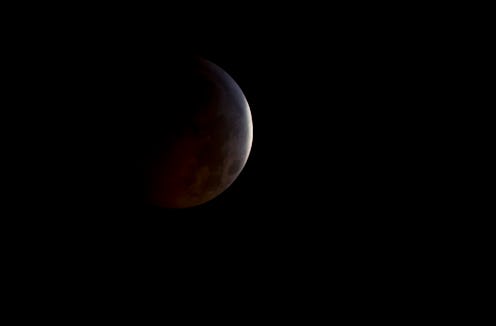Life
The Winter Solstice Won’t Be Long, But That Doesn't Mean It Won't Bring Good News

As temperatures dip into "it's too cold to get out of bed" territory, us Northern Hemisphere folks all have one thing in common: we are all dreaming of sneaking away on a tropical vacation or time traveling to summer. And while the coldest days are yet to come, there's a bit of good news: The winter solstice is almost here, which will mark the shortest day of the year. I know this doesn't sound like good news, because longer nights mean colder weather, but it is if you put things into perspective: after the winter solstice, the next day will be one minute longer, and they'll only continue to get longer (and warmer) after that until spring. So, this in mind, you're going to want to know how long the winter solstice lasts, what it actually means, and how it's going to affect your ability to get out of bed in the morning in the freezing cold weather.
On Thursday, Dec. 21, the sun will rise at 7:16 a.m. At 11:27 a.m., the sun will be directly over the Tropic of Capricorn, which is the farthest south it will reach all year — aka, the winter solstice will occur in that very moment. Yep! Technically the solstice position only lasts about a minute, so it's fairly short — and unless you're tracking the sun very carefully all morning, it will be pretty hard to see because the movement will appear so slight. The best way to really see the the effects of the sun's position is to go outside and check out your shadow, as it will be the longest you'll seen all year. All of these celestial perceptions are a result of the position of the Earth’s orbit and the 23.5 degree rotational axis in relation the orbit it takes around the sun.
The sun will travel so low in the sky on Dec. 21, that it will appear to set in very same place that it rose from — hence the reason it will be hard to clearly observe. For many viewers on the Northern Hemisphere, this optical illusion will make it look like the sun is not moving at all. As a matter of fact, the term "solstice" comes from the Latin word "solstitium" which translates to "the Sun stands still." At 4:30 p.m., the sun will set, bringing the total daylight to five hours and 50 minutes shorter than it would be on the summer solstice. For most people living north of the equator, this day will be the shortest of the entire year, also making the night the longest.
After the solstice occurs, aka starting on Dec. 22, the days will start to grow longer by at least one minute each day, as the sun begins to appear farther and farther above the horizon. This perceived motion will continue, adding about a minute a day of sunlight until the vernal equinox, in which there will be equal amounts daylight and darkness. And finally, on Jun. 21, the summer solstice will occur, marking the longest day of the year with the most sunlight and the shortest night. This cycle will continue to occur throughout our lives as it always, has, sometimes varying one to two days before or after the 21st of the month, depending on the year.
So yes, starting the day after the winter solstice, you might find it just a tad easier to get out of bed in the morning. It might not be warmer, but knowing you're another day closer to summer will surely be encouragement enough to face the day. If you're not a fan of winter, just remember that it doesn't last forever and definitely helps us to appreciate the warmer months. And if you are a rare winter-lover, rest assured you've got many more cold days ahead of you!